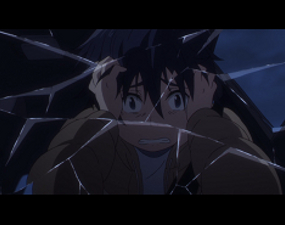
OBIR: Occasional Biased and Ignorant Reviews reflecting this reader’s opinion.

The War Beneath: The Rise of Oceania – by Timothy S. Johnston
Publisher: ChiZine Publications, Peterborough, Ontario, Canada, 2018.
Cover Art: Erik Mohr
Premise:
As stated in a blurb for the book:
“Truman McClusky has been out of the intelligence business for years, working the kelp farms and helping his city Trieste flourish on the shallow continental shelf just off the coast of Florida. Until his former partner shows up, that is, steals a piece of valuable new technology and makes a mad dash into the Atlantic. Before he knows it, Mac ends up back in the game, chasing the spy to not only recapture the tech, but to kill his former friend. But when he learns the grim truth behind the theft, it sends his stable life into turmoil and plunges him into an even deadlier mission” [involving foreign powers, submarine warfare, and enemy spies] “The future of the city depends on McClusky . . . if he can make it back home.”
The book begins in the year 2129. Global warming has led to the rising of the oceans. Many famous port cities have been destroyed, with populations fleeing inland. The world’s economy was nearly shattered, but is now recovering. Twenty-nine underwater cities dot the world’s continental coastal shelves, along with hundreds of deep-sea mining and research facilities. Ten million people live beneath the sea, their aquaculture and resource gathering vital to the world’s economy. Some nations are willing to risk war in order to dominate this new frontier.
Review:
Forgive me, but I am going to frustrate the author (and no doubt many readers) by beginning with a personal digression before getting into the substance of this book. That’s the way I roll.
There is a ghost hovering over this book. His name is Jacques Y. Cousteau. Captain Jacques-Yves Cousteau. He used to be a household name and something of a living icon. Alas, I fear he is largely unknown to the current generation, but he had a bit of an impact on my youth.
When serving with the Vichy French navy in 1943 Captain Cousteau co-invented (along with fellow officer Philippe Tailliez) the aqualung, or scuba gear. Up to that point divers depended on clumsy diving suits with heavy boots and large metal helmets connected to the surface with flexible air hoses, or on dangerous chemical re-breathing packs. The aqualung, with its clever air regulator, freed divers to become what Cousteau persisted in calling “menfish” to emphasise the complete freedom of movement his invention offered. Postwar, the new technology spread like crazy among sports divers who had previously been content with snorkeling.
I was first exposed to this hot new trendy phenomena by the TV series Sea Hunt, starring Lloyd Bridges, which ran from 1958 to 1961. Playing intrepid scuba diver Mike Nelson, Lloyd broke the number one rule of scuba diving in every single episode, namely “Never dive alone!” But how else could the script writers consistently place him in peril? Makes sense to me. The series got me used to the idea that divers were the equivalent of spacemen exploring a new and not necessarily hostile environment.
Then, one day in 1963 or thereabouts I stood before a movie theatre in Ottawa showing a rerun of Cousteau’s 1956 film The Silent World, wondering how exciting close-up shots of coral could be, when I spotted a sign outside the Rialto theatre half a block away advertising a triple bill featuring a rerun of The Three Stooges Meet Hercules. So, I missed the Cousteau film on that occasion. However, I picked up the pocketbook version of Cousteau’s book The Silent World in 1965 (original hardcover published in 1953) and became familiar with his early career that way.
Further, I discovered in the late 1960s that used National Geographic magazines could be bought at Cole’s Notes Bookstore in Toronto for a mere 25 cents each. Thus I enjoyed Cousteau’s numerous articles with titles like “Fishmen Explore a New World Under the Sea” (October, 1952) and “Diving Saucer Takes to the Deep” (April, 1960). Then, with the advent of his frequent TV specials beginning in 1966 (his last posthumously in 1999) you might say I became intimately familiar, along with millions of others, with Cousteau and his crew aboard their research vessel Calypso. Much of what he revealed about the undersea world is the stuff of cliché now, but was brand new and exciting at the time, helped along by his breathless sense of wonder narration which critics hated but proved very effective.
I actually got to listen to him speak at an outdoor stage at Expo 86. Can’t quite remember what he was wearing, but his famous red toque certainly stood out, not to mention his distinctive French accent. I was close enough, maybe 20 feet away, to follow his facial expressions. He seemed to exude ennui, seemed listlessly passionate, but then he was getting on in years. I remember he warned locals that the Georgia Strait could eventually be killed by pollution if we failed to take measures ASAP to prevent this. I had the impression he was convinced we weren’t paying attention and he was merely being a Cassandra. Sad.
Even sadder, perhaps, is that the final note of his legacy, in my experience, was the 2004 film The Life Aquatic with Steve Zissou, with Bill Murray playing a jaded and bitter undersea explorer obviously based on Jacques Cousteau. It was supposed to be a fun comedy but was more of a dark satire that strikes an odd, offkey tone for those of us who grew up with Captain Cousteau. Meant to be a tribute of sorts, I guess, but didn’t feel like one to me. Cousteau didn’t live to see the film, which is just as well, I think. I suspect he wouldn’t have liked it.
So, why the long digression? Simply to convey how I was inspired by Cousteau to believe, for a few decades early in my life, how the oceans would become the cornucopia of resources that would solve mankind’s problems, and how exciting the process of exploration and colonizing that sodden new frontier would be. I wasn’t alone. It was a bit of a craze, something that SF fen took for granted, I think.
Also hovering about the book is The Ghost of the Grand Banks himself, Arthur C. Clarke, who, in his books The Challenge of the Sea (1960) and Profiles of the Future (1963) talked about the vast potential of the oceans in terms of aquaculture and mineral resources. Indeed, he appeared to promote the exploitation of the oceans as much as he did the exploitation of the resources of the Solar System. The media of the day, respecting his scientific background more than they did his SF writing, took him very seriously. He was “respectable.”
Consequently, the Aurora plastic model company, famous for its Universal Studios Horror Movie monster kits, experimented with the popular undersea craze by releasing in 1970 a large model of the U.S. Navy Sealab III, an experimental undersea habitation module, showing interior details and including two scuba divers. It was a flop. Didn’t sell well at all. Military submarines and SF contraptions like the Flying Sub from the Seaview sold, but not undersea exploration items, evidently. Aurora never returned to that theme.
In hindsight, though undersea exploitation made sense to a lot of SF fen and Cousteau fans, not to mention National Geographic readers, I think the general public was lukewarm over the prospect. Plus, I think that Cousteau himself, as early as 1986, was worried that mankind would destroy the oceans as a habitat for life before we’d get around to managing it properly. Certainly today, knowing that we wiped out the Grand Banks Cod fishery, and knowing that overfishing has reduced fish selling to a high level of fraud (a lot of the fish you eat in restaurants or buy in stores is not actually as labelled) it’s beginning to look like undersea mining in dead zones is the most we can look forward to. And maybe not even that.
So, getting back to the book (“It’s about bloody time!” shouts the author) I have to admit to a certain amount of scepticism reading the first few chapters. Given how bad the current situation is, with worse to come, harvesting the oceans biomass in 2129 to the extent of feeding humanity seemed a bit far-fetched. I wondered, is this the one impossible SF gimmick I have to accept in order to enjoy the book? (In the spirit of, say, the impossible anti-gravity concept underlying H.G. Wells’ splendid First Men in the Moon.)
The more I thought about it, the more I realized I was being rather nitpicky. The widespread flooding of the coastal littoral and connected low-lying inland regions would be a devasting economic shock bringing about a world-wide depression, not to mention chaos and considerable loss of life. Chances are exploitation of the oceans would come to a grinding halt along with darn near everything else. By the time inland industry picked up and large scale manufacturing could be contemplated, the oceans, including the newly flooded areas, would have had several decades of breathing space to recover somewhat. So, with proper management, maybe biomass exploitation could be sustainable after all.
And, as I read deeper into the novel, it was evident that Johnston had done extensive research on undersea technology both current and anticipated such that I could easily take everything in the book for granted and not worry about it. Oh, there are a few gizmos and gimmicks, some of them absolutely vital to the plot of the book, that seem incredible by today’s standards, but they appear to be based on sound extrapolation of current knowledge so, again, nothing to fuss over. The science and setting is credible.
And now we come to the third ghost flitting about the pages, Ian Fleming. A number of James Bond novels and films involve underwater lairs, submarines, and fisticuffs, along with improbable plots that are fast-paced and entertaining. The War Beneath fits well into that mould. I frankly lost count of the number of times Truman has to beat the crap out of one or more opponents, sometimes inside a dry habitat, more often in the dark of deep waters. And the explosions! Plenty of explosions. All kinds of explosions. Eminently filmable. The book could easily be turned into a watchable and exciting action-adventure film. Of that I have no doubt. It’s got everything: international tensions, war-mongering, spy vs. spy, little submarines, big submarines, humongous submarines, risky diving, risky bars, risky bureaucrats, risky friends, friendly enemies, unexpected developments, annoying interlopers from France, super powers on a rampage, unsubtle diplomacy, some hot sex (just a little), and lots and lots of underwater fisticuffs. Oh, and explosions. Don’t forget the explosions.
Oh, I’m sorry, this is not the existential surrealist novel you’re looking for. The symbolism is plain and transparent, as obvious as a fist in your face. Is this a bad thing? No! If you’re looking for a techno-thriller combining Ian Fleming, Tom Clancy and John Le Carré, The War Beneath will satisfy.
Okay. Ian Fleming for the intricate, improbable but fun plot, Tom Clancy for the emphasis on the latest improbable but conceivable technology, and both of them for the violence, but what has John Le Carré got to do with it? After all, he wrote his character George Smiley as the “anti-James Bond,” as a portrayal of what British spies were really like. He considered Ian Fleming’s character James Bond an international terrorist and thug not worthy of the title of spy. Johnston’s character Truman McClusky, though not actually James Bond, resembles him in terms of top physical fighting condition, martial skills, and laissez-faire attitude regarding colossal amounts of unavoidable collateral damage. So where does Le Carré fit in?
First, politics and power-seeking underly the actions and plans of all the nations and authority figures in the novel with the result that all the characters are pawns and puppets of one kind or another whether they know it or not. The plot couldn’t function without this background.
Second, all the main characters, and quite a few minor ones, are motivated primarily by revenge. This makes for rather tentative, not to say dicey, relationships. Nothing is what it seems. Nobody is what they seem. The plot involves a series of unexpected revelations which help maintain the rapid pace. It’s a good technique.
Which is not to say you will be overcome by a tsunami of angst when you contemplate the characters responding to immediate problems with necessary violence, because you won’t. This isn’t one of those novels where the characters spend most of their time worrying what the other characters think of them. Mostly they wonder if they will live long enough to carry out their mission, achieve their personal goals, and, above all, carry out their revenge. Nevertheless their actions are fully explicable in terms of their motivation and character warped by painful experience. A realistic touch, that. Or, to put it another way, the characters don’t stand in the way of the plot, they add to it.
Mind you, The characters are not as psychologically deep as those in a John Le Carré novel, but they don’t have to be. This is an action adventure novel, after all. And the ambience is not as “real” as a Tom Clancy novel, but frankly, I think Tom Clancy puts too much of his research into his books to the point where I find myself skipping paragraph after paragraph to get back to the action. No such problem with this book. I think Johnston manages to slip in just enough details and limited info dumps to tell us what we readers need to know without knocking us out of our absorption in the plot. A neat trick for a writer to pull off, and I think he succeeds.
Granted, the final scene has Truman explaining to the assembled surviving main characters how his suddenly-concocted ad-hoc scheme to save the world actually played out but he kinda had to do that in order to prevent them from killing him. Besides, if the author had revealed to the reader what Truman had in mind during the frenzied, climactic battle scenes it would have taken all the suspense out of the situation. So, the final scene works.
I would be remiss if I didn’t point out there’s an Easter Egg hidden in the text which I suspected early on but wasn’t entirely certain till a particular revelation made it crystal clear quite late in the book. It all has to do with one of the inspirations for this novel. People of my generation who watched the same TV shows I did when I was young will undoubtedly get it. The current generation? Maybe not at all.
CONCLUSION:
In “A Note to the Reader” at the back of the book Timothy S. Johnston writes:
“I love thrillers that are set on land, in the air, or in space; I wanted to tackle the challenge of doing one under the oceans. I think I succeeded. At its core this book is exactly what I enjoy reading: it’s a grand adventure, a thriller with a technological component in an interesting and seldom-used setting, with a conflicted character on an emotional journey.”
Did he succeed? Yes. Resoundingly. I really enjoyed reading this book. It’s what I call a ripping good yarn, a genuine page-turner. If you like action spy thrillers with lots of high tech in a science fiction setting this book will definitely please. It’s loads of fun. And fast-paced. Did I mention fast-paced? ‘Cause it is.
Check it out at: < The War Beneath >
Check out the sequel at: < The Savage Deeps >










